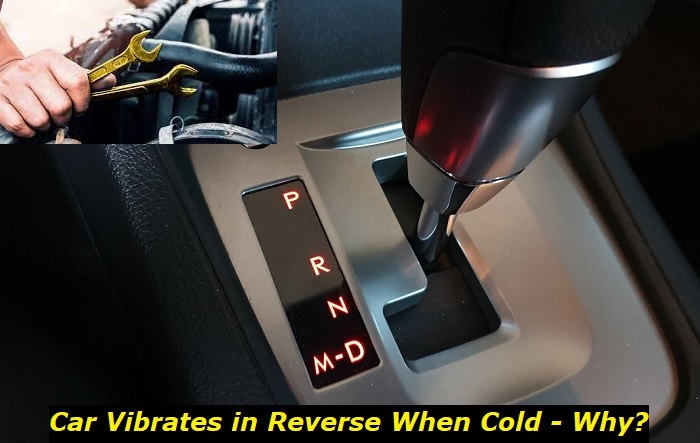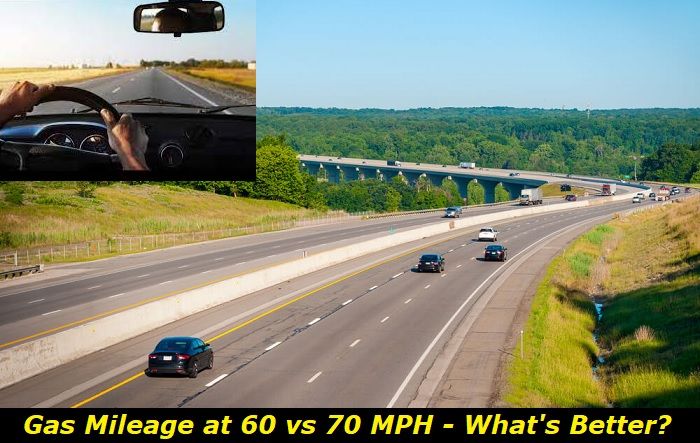It's quite normal for the engine to vibrate during a cold start. However, the problem starts when your car's engine vibrates beyond the normal levels when you reverse or during idling, especially in cold weather. This article will cover the reasons behind the car vibrating in reverse when cold and how to fix the issue based on each diagnosis.
Transmission shuddering problem highlights
- Level of importance:Medium
- Reasons:Low fluid, wrong fluid, cold transmission, issues with torque converter
- Needed expertise:High
- Needed tools:Professional tools set
- Time taken:3-7 hours
- Can you drive? Carefully
- Possible issues: Torque converter wear and tear, issues if shuddering gets worse.

What Triggers the Engine Vibration on a Cold Start?
In cold weather, the engine temperature cools to the surrounding temperature due to a decline in the coolant and engine oil temperature. When you start your car, the coolant temperature sensors relay the coolant's cool temperature to the car's computer. The car's computer then reacts by enriching the air/fuel mixture(adding more fuel due to the air density change). The process is called the enrichment cold start process, where the car idles high for a while until the car's engine becomes warm.
A cold start also adds up a load on engine parts such as the coolant pump, fuel ignition system, fuel pump, and oil pump, which causes the vehicle to shake. That's because the pumps find it difficult to circulate the fluids due to the low temperature. The engine is also under load to reach its optimum temperature causing it to vibrate. When the car shakes excessively, it's a sign that it has an issue and needs fixing. The vibration usually starts at a low intensity and slowly progresses to a higher intensity when the issue is not fixed.
Reasons Why Your Vehicle Starts Shaking in Reverse, and When the Engine is Cold
Various reasons can cause the engine to shake while moving the car in reverse and when the weather is cold. Some of those reasons are:
1) A Bad Engine Mount
The engine mounts are support structures that hold the engine in position. This is because the engine and the transmission are bolted together and must be held to prevent them from moving around the engine bay area. You can find the engine mounts at the bottom of the engine. The number of engine mounts depends on the engine's size, stability, and positioning.
A small engine can have two to three mounts, while a larger one can possess four. The mounts are made up of steel and rubber. The engine mount's rubber parts have the function of absorbing the engine's vibrations.
A bad engine mount is one of the most common problems that result in a car shaking during cold weather. The shuddering occurs when you start your car and becomes more pronounced when the vehicle is parked, idling, or moving in reverse. If the car vibrates due to a bad engine mount, it's because the worn-out rubber cannot stop the engine's vibrations. The shuddering starts when you apply the first or reverse gear since these gears place more pressure on the vehicle than the other gears. Other symptoms to identify a broken or damaged engine mount are:
- Impact noise that comes from the engine bay.
- A bumpy ride on a smooth road.
- Visible wear or damage on the engine mounts.
2) Worn-out Transmission Mount
Another reason the car might vibrate during a cold start is when the transmission mount is worn out. The transmission mount may differ from the engine mount in terms of structure but has the same function as the engine mount. Just as the engine mount holds and supports the engine to the car frame, the transmission mount also supports the transmission box onto the car frame.
The two types of mounts have rubber parts that provide a cushion against vibration, which can bring up discomfort when driving.
When the transmission mounts are worn out, the gearbox becomes loose and shaky and may come into contact with the engine parts triggering a vibration. The vibrations usually intensify when the driver engages the reverse gear. That's because the reverse gear puts a lot of pressure on the transmission mounts. On the transmission mounts, the rubber parts can also melt due to friction that comes with changing gearbox gears, causing vibrations to come up.
3) Damaged Spark plug and Its Wiring
Modern engine models use an ignition coil to generate high-voltage electricity. The spark plug converts this electricity into a spark that ignites the air/fuel mixture, causing the engine to start.
Wearing out over time or accumulation of white or black carbon deposits or dirt may cause damage to the spark plug leading it to malfunction. Damaged spark plugs cannot create a spark that ignites the air-fuel mixture making the engine misfire and causing engine vibrations accompanied by a humming sound.
Faulty spark plug wires can also cause engine shuddering. This is because the faulty spark plug wiring causes bad ignition timing, causing the RPM and the power to drop under loads. It also results to engine misfires. The spark plug wires can also wear out with time and come into contact with metal leading to a spark intensity loss or causing an arc jump within the combustion chamber.
4) An Improper Timing Belt
Another issue that can cause vibration is an improper timing belt. The timing belt controls the proper functioning of crucial engine components like belt-driven parts and fans by rotating the engine's cam and crankshaft in sync. When the timing belt becomes loose or cracks, the car shakes while producing a rattling noise. A bad timing belt prevents the car from fully igniting and only engages the starter motor. That's because it operates the crank and shaft.
5) A Clogged Air Filter
An air filter aims to ensure a good mixture of fuel and air to enable optimum engine performance. It also traps any dust particles, insects, or sand to prevent damage to engine parts like engine pistons, piston rings, engine cylinders, or engine walls. Air filters can be circular, cylindrical, or in panels depending on the car's model.
A clogged air filter changes the air/fuel mixture balance, consequently leading to engine misfires or rough idle that cause engine vibrations. Other symptoms of a clogged air filter are:
- Reduced fuel economy.
- Black smoke that comes out of the car's tailpipe.
- A rattling, coughing, or popping sound.
6) A Clogged Fuel Injector
The function of the fuel injector is to spray fuel into an internal combustion engine using electronically controlled valves that open or close many times a second. The fuel injectors may clog up over time due to the accumulation of varnish or carbon deposits. The clogging up leads to the delivery of uneven amounts of fuel with each engine cycle.
Fuel flow interruption into the combustion engine causes the vehicle to shake or vibrate when idling or reversing. Driving your vehicle with a clogged fuel injector for a long time may lead to pre-ignition of fuel and the car failing to start.
How to Fix the Vibrations while Reversing Your Car during a Cold Start
How you fix the vibration issue depends on the diagnosis you get after a thorough inspection and the use of the right diagnosing tools. The following are ways in which you can fix your vehicle depending on its issue.
- Fixing the vibrations due to worn-out or broken engine mounts requires first coming up with the right diagnosis, which can be lengthy due to the technicalities involved. To make the right diagnosis, you need to properly inspect the engine mount's rubber parts to determine if they can absorb the vibrations. Any loose or worn-out engine mount needs replacement to eliminate the vibrations.
- Fixing the transmission mounts can be complex and may require the services of a professional mechanic. This also needs a visual inspection of the transmission mount to pinpoint the origin of the issue. Worn out transmission mount also needs to be replaced.
- Although the timing belt is made of high-quality rubber, it's also prone to wearing out over time. That means it also needs replacement from time to time. It would be best to refer to the timing belt replacement intervals on your manufacturer's guidelines to determine when to replace them. Failure to replace the timing belt can result in irreparable damage to your engine that's expensive to fix. In most cases, replacing the timing belt will require replacing the water pump.
- To fix the vibration caused by an incorrect higher octane gasoline, you need to change to a lower octane gasoline suited to your car's engine. For instance, if your engine is rated for 87 octane gasoline, it's advisable not to use a higher octane fuel.
- Replacing the air filter helps in increasing fuel efficiency, prolonging the engine life and reducing the car's emissions. Most manufacturers recommend replacing the air filter every 10000-15000 miles. However, driving on dusty roads needs more frequent changes.
- Clogged fuel injectors need concentrated clean-up using a fuel injector cleaning kit. Manufacturers recommend cleaning the fuel injectors every 45000 miles or three years. Worn-out fuel injectors need replacing, not cleaning.
Bottom Line
There you go-the reasons that can cause your car to vibrate when reversing and how to fix it. If you don't have the necessary skills, tools, or time to diagnose and fix the issues causing your car to vibrate, it would be best if you find a qualified mechanic to do that for you.
About the authors
The CarAraC research team is composed of seasoned auto mechanics and automotive industry professionals, including individuals with advanced degrees and certifications in their field. Our team members boast prestigious credentials, reflecting their extensive knowledge and skills. These qualifications include: IMI: Institute of the Motor Industry, ASE-Certified Master Automobile Technicians; Coventry University, Graduate of MA in Automotive Journalism; Politecnico di Torino, Italy, MS Automotive Engineering; Ss. Cyril and Methodius University in Skopje, Mechanical University in Skopje; TOC Automotive College; DHA Suffa University, Department of Mechanical Engineering






Add comment